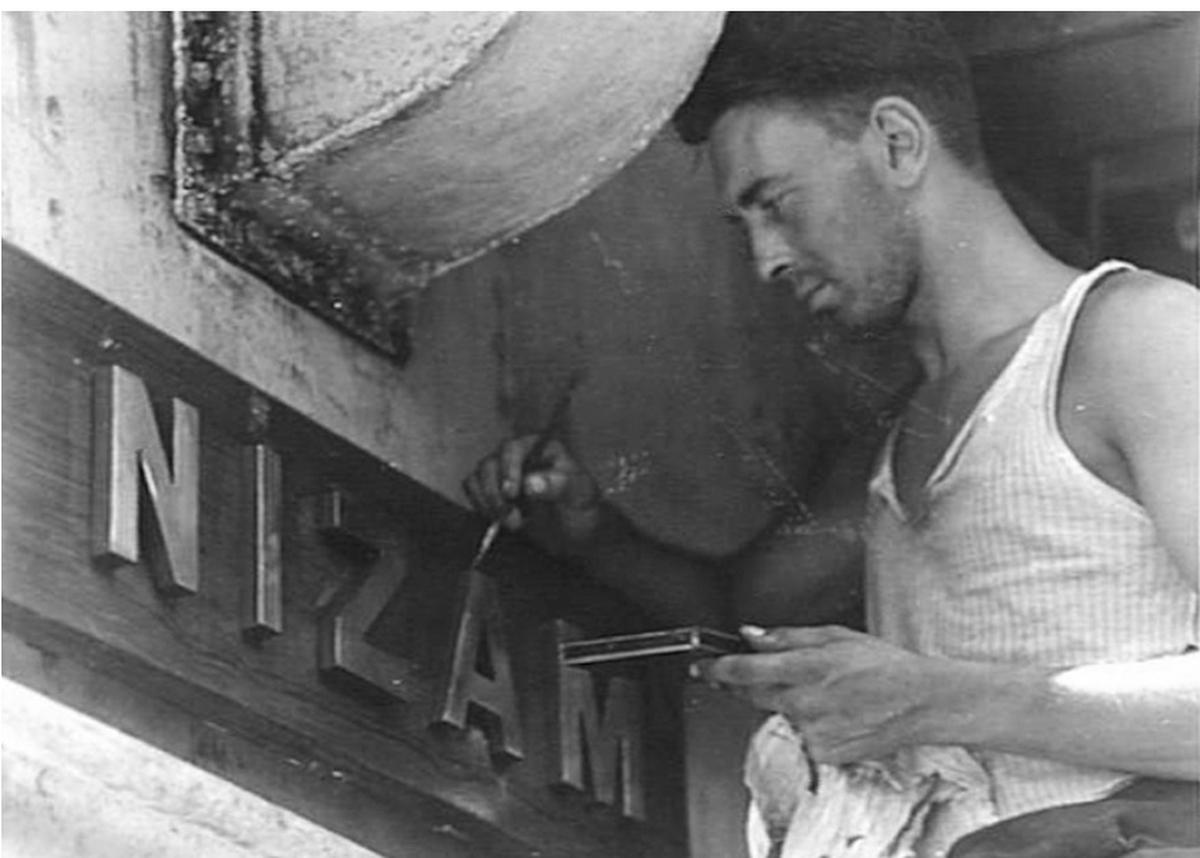
HMAS Nizam was equipped with 6×4.7 guns in three twin turrets, torpedo tubes and close-range weapons built in various British shipyards.
| Photo Credit: Arrangement
Weeks after two nuclear devices were dropped on Japan, the Japanese military surrendered to the American forces on board the ship, USS Missouri in Tokyo Bay on September 2, 1945. Anchored in the Tokyo Bay was HMAS Nizam, the ‘N’ class destroyer that saw action in Chittagong, the Mediterranean, Pacific Theatre, Cape of Good Hope and other locations. The G38/D15 was named ‘Nizam’ after the Hyderabad ruler as it was built with the financial help of Mir Osman Ali Khan.
At the end of World War I, Osman Ali Khan got the title of Faithful Ally, thanks to his generosity for funding the war effort. He continued the streak during World War II when Hyderabad shelled out ₹8.02 crore and loaned ₹49.43 crore to the Indian government. The HMAS Nizam built for the Royal Navy and loaned to Royal Australian Navy was put together with part of the monies given to the British Empire by Osman Ali Khan. According to one estimate, the Nizam had given ₹1.64 crore for the effort of the Allied forces during World War I.

The Nizam’s name being embossed on the ship.
| Photo Credit:
Arrangement
It was this assistance in the two World Wars that the Nizam thought would help him keep his sovereignty once the British made a decision to withdraw from India. But it was not to be. The Indian Independence Act made it very clear to all princes who imagined continuation of their independence. “As from the appointed day (August 15, 1947) (b) the suzerainty of His Majesty over Indian States lapses, and with it all treaties and agreements in force at the date of passing of this Act between His Majesty and the Rulers of Indian States…”.
But at the height of World War II, Osman Ali Khan did not think twice before loosening his purse strings. HMAS Nizam was among the eight ‘N’ Class destroyers with 6×4.7 guns in three twin turrets, torpedo tubes and close-range weapons built in various British shipyards beginning in 1939.
The ship initially served in the Eastern Mediterranean and played a key role in the evacuation of Crete. It served as a lifeline to the hemmed in garrison by bringing in supplies including ammunition, getting fresh troops and evacuating wounded soldiers. According to information from the Australian Navy, the ship did 14 round trips with the final being under full moonlight in the glistening Mediterranean.
This was something similar to the role of Hyderabad Lancers during World War I where they saw action in protection duties rather than fighting during the Battle of Haifa on September 23, 1918. The Hyderabad cavalry was tasked with escorting prisoners while the Jodhpur and Mysore Lancers fought to liberate Haifa, an Israeli port city, armed with just lances and swords.
A year later, the HMAS Nizam was part of the flotilla of destroyers Napier, Nepal and Norman that patrolled the key shipping line around Cape of Good Hope, open through 1942 and 1943 as the German U-Boats wreaked havoc elsewhere.
Later, in 1944, when the Japanese forces overran Burma (present-day Myanmar) and reached the eastern edge of India, the destroyers played a role in opening another front while being deployed at Chittagong (in Bangladesh). The destroyers bombarded the hill tracts down the coast of Burmese and present-day Bangladesh coast to harass Japanese troop movements. They carried out pre-landing bombardment to help Allied troops.
The Australian Navy remembers the Nizam for a more grim reason. On February 11, 1945, while the HMAS Nizam was moving south of Leeuwin lighthouse, it was struck by a king wave that caused the ship to roll almost 75 degrees to the port side. Ten sailors were swept away.
The destroyers, including HMAS Nizam, were scrapped in 1956.







